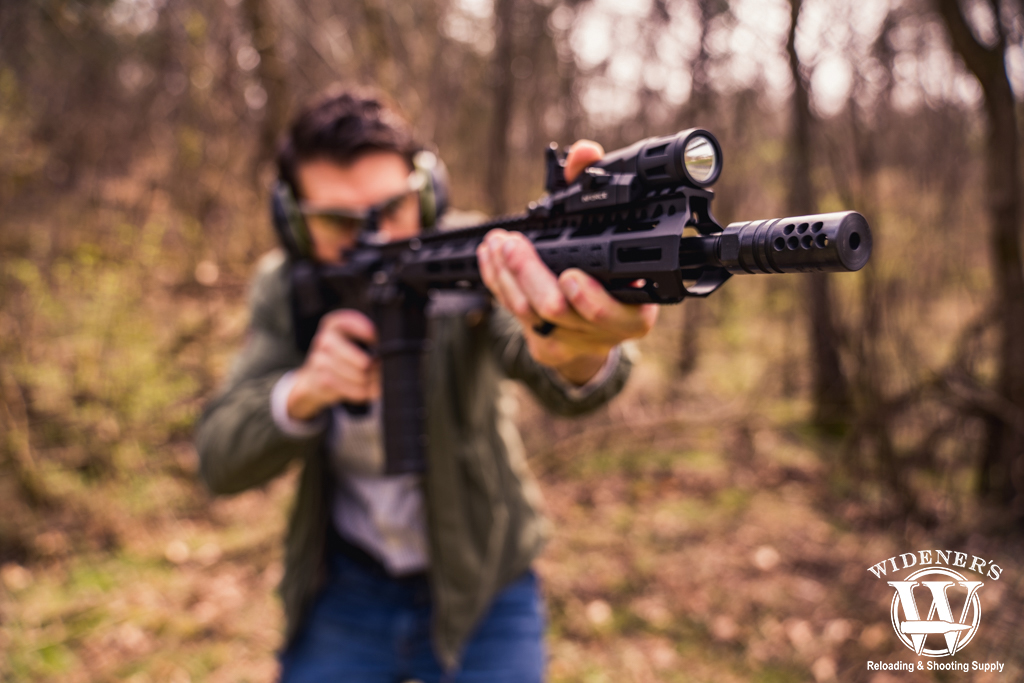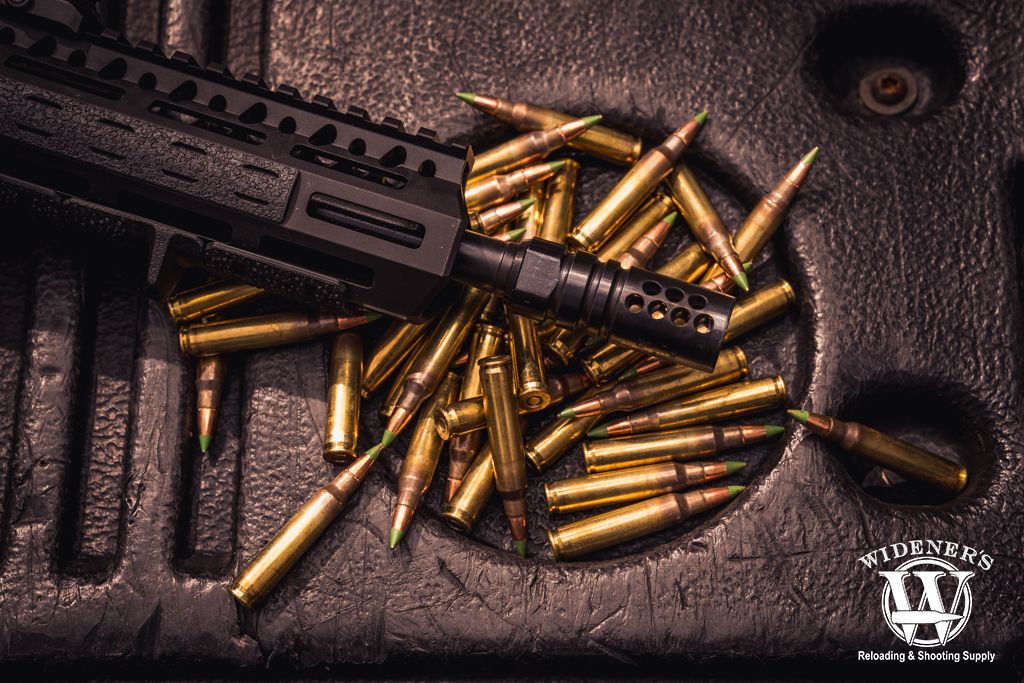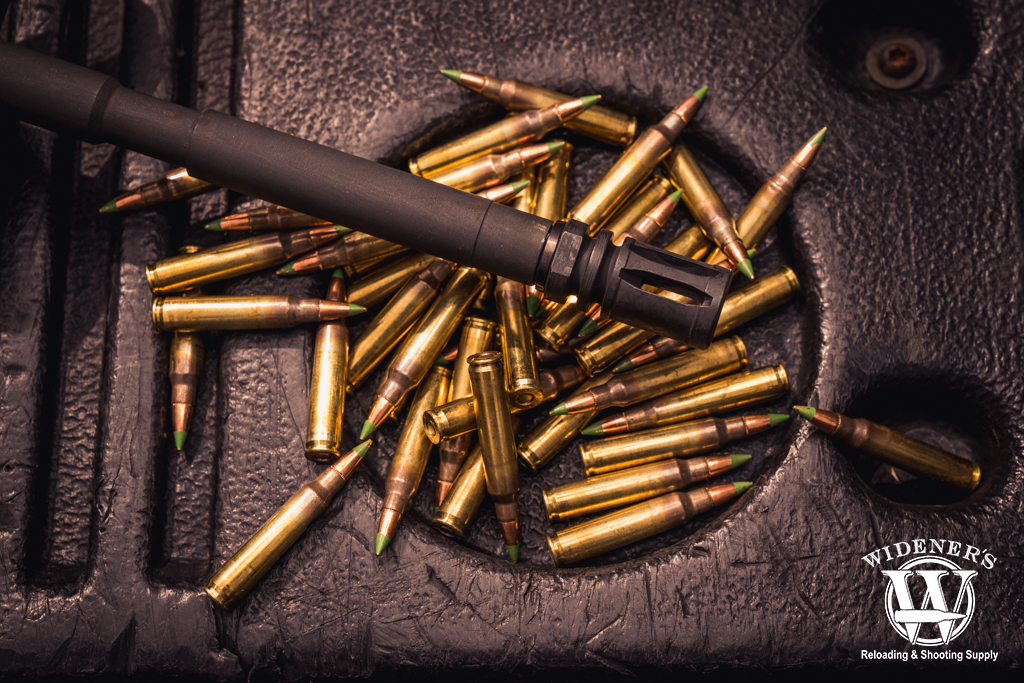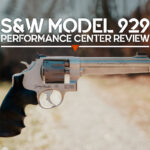

By Guy J. Sagi
Flash hiders and compensators occupy the muzzle end of a firearm barrel. They can appear nearly identical, but the functions they perform are not the same. Despite the shared real estate and similar looks, a compensator’s primary mission is to reduce muzzle rise at each shot, while a flash hider minimizes light emitted at the barrel’s end.
Manufacturers harness a variety of approaches to accomplish both tasks. The mechanics are relatively straightforward, but the forces tamed and captured are anything but simple. Often, you’ll find these options already attached to the end of your barrel when you purchase a gun. Manufacturers use industry standards and performance trends to decide whether to place a flash hider VS compensator on the end of the barrel for resale.
What Is Muzzle Rise?

Muzzle rise happens when the rifle transfers energy and recoils backward after a shot is fired.
Have you ever shot a bolt-action rifle chambered in .308? If so, you probably noticed the barrel tipping up after you pulled the trigger. There are several reasons a muzzle will rise slightly at each shot. The first is a practical application of Newton’s third law. For every action, there’s an equal and opposite reaction.
Squeeze the trigger and a primer ignites the propellant, it burns, gas expands in the chamber and barrel until enough force generates to launch the bullet from the barrel—at a high speed. That “action” takes place in a fraction of a second, and so does the corresponding “reaction.” The shot generates an identical force in the opposite direction in the gun. We call it recoil.
Recoil Science
How much actually gets to the shooter depends on a variety of factors. Perceived recoil is subjective, but Newton’s law dictates the actual energy created to jettison that projectile is the precise measure of recoil.
Some, thankfully not all, of that force can temporarily moves a shooter’s sights above the target. That muzzle rise makes it hard to deliver fast and accurate follow-up shots, a serious handicap for competitive and self-defense shooters.
The gun’s weight distribution and human interface at the grips are other reasons a gun goes up instead of straight back with a shot. There’s more to comparing a flash hider VS compensator than balance, grip shape and hand elevation, though.
A bullet moving through the barrel engages the rifling, assumes an accuracy-enhancing spin and, once it leaves the firearm receives a tidy dose of equal and opposite rotational energy. Angular momentum, so to speak, helps move those sights off target as well.
Mechanical Operation
The last muzzle-rise culprit we’ll mention is purely due to the mechanical operation of semi-automatic firearms, particularly pistols. In these designs the slide or bolt moves back after a shot to pick up and eject the empty brass. During that travel a spring is compressing. At some point, the motion comes to a halt, usually at a metal stop, whereupon it reverses direction and grabs a fresh cartridge from a magazine while gliding forward. When the round chambers and everything is finally back in battery a follow-up shot is possible.
It may take only a fraction of a second, but energy transfers to the gun when hitting that “stop” during cycling.
Compensator Operation

A compensator redirects high-pressure gas to stabilize the muzzle of a rifle when a shot is fired.
Burning propellant is the biggest energy producer in the cycle, and a lot of its untapped potential escapes at the muzzle. Efficient compensators tap into that potential by redirecting some of the high-pressure gas to keep the muzzle down during firing.
Early solutions started simple and effective. A port or more tapped on the topside—with vents pointing directly up—forced gas blowing out the holes to apply downward force to counter muzzle rise. Some models use that approach to this day. It’s effective, but it can increase muzzle flash intensity directly in the sight picture. The situation is a big concern when shooting at night or on self-defense guns.
Thankfully, manufacturers have designed other versions using a variety of configurations that aren’t nearly as perpendicular in nature. Some take pages right out of aerospace engineering books, with similar concepts—reversed to keep muzzles from rising.
Possible Compensator Drawbacks
Maximizing return on the designs often means designers concentrate the gas/flame flow out of the compensator ports. That means getting close to one of those vents may result in burns. It’s a real concern for close encounters of the self-defense kind—where your handgun may remain close to your body to ensure retention during an attack.
Compensators add weight and length. Your holster may no longer fit once you mount this muzzle device. In addition, adding mass to a semi-auto may slow its operation, make it finicky and even temporarily turn it into a single shot. Give the model you’re contemplating a try before buying, if possible, and experiment with different cartridges. Sometimes slightly heavier or lighter bullets takes care of the problem.
And just because one works well on a friend’s gun, doesn’t mean it will run on yours. The odds are in your favor if you have the same make and model, but parts wear and springs fatigue.
Flash Hider Operation

A flash hider minimizes the visibility of a rifle’s muzzle flash when a shot is fired.
There’s no way to eliminate all the flash produced at the muzzle end of a firearm. This is partly because there are three major sources of that unavoidable light. The culprits, in no particular order, include unburned powder igniting once it’s forced into the atmosphere, jettisoned powder in the process of burning and escape of gas hot enough to glow. Proper cartridge choice can reduce the first two sources, but the third’s virtually unavoidable.
Addressing that light-emitting traffic jam is a serious challenge. The first flash suppressor appeared around World War II, when a few Lee Enfield carbines wore one. Its common-sense approach is in use to this day.
A flash hider generates added turbulence to mixed gases and escaping particles with the surrounding atmosphere quickly and efficiently. The light is there but diminished in magnitude and duration. The three-prong versions worn by M16 A2s in Vietnam were so effective that they have become nearly standard attire for today’s ARs.
You’re no longer limited to those standard birdcage designs, either. Some of the best-looking options available today perform every bit as good as they look. You’d never know their entire purpose is to “mix things up” at the muzzle end.
Possible Flash Hider Drawbacks
They add length to a firearm, although most flash hiders ride rifle barrels, where it’s of minimal concern. Mounting incorrectly or having ports pointed into line of sight can compromise night vision, so purchase wisely and follow installation instructions implicitly.
Ports pointed directly down also have a habit of kicking up dust, although nothing like the often tornado-like effect of muzzle brakes. Threads on barrels are not all the same, either, so consult with your manufacturer or barrel maker before purchasing.
And, a flash hider, more accurately flash suppressor, and compensator are not the same. That doesn’t mean a few of the crossover devices available today don’t do both with some success. Their missions are distinct and different, despite the shared location and usually similar looks of a flash hider VS compensator.


